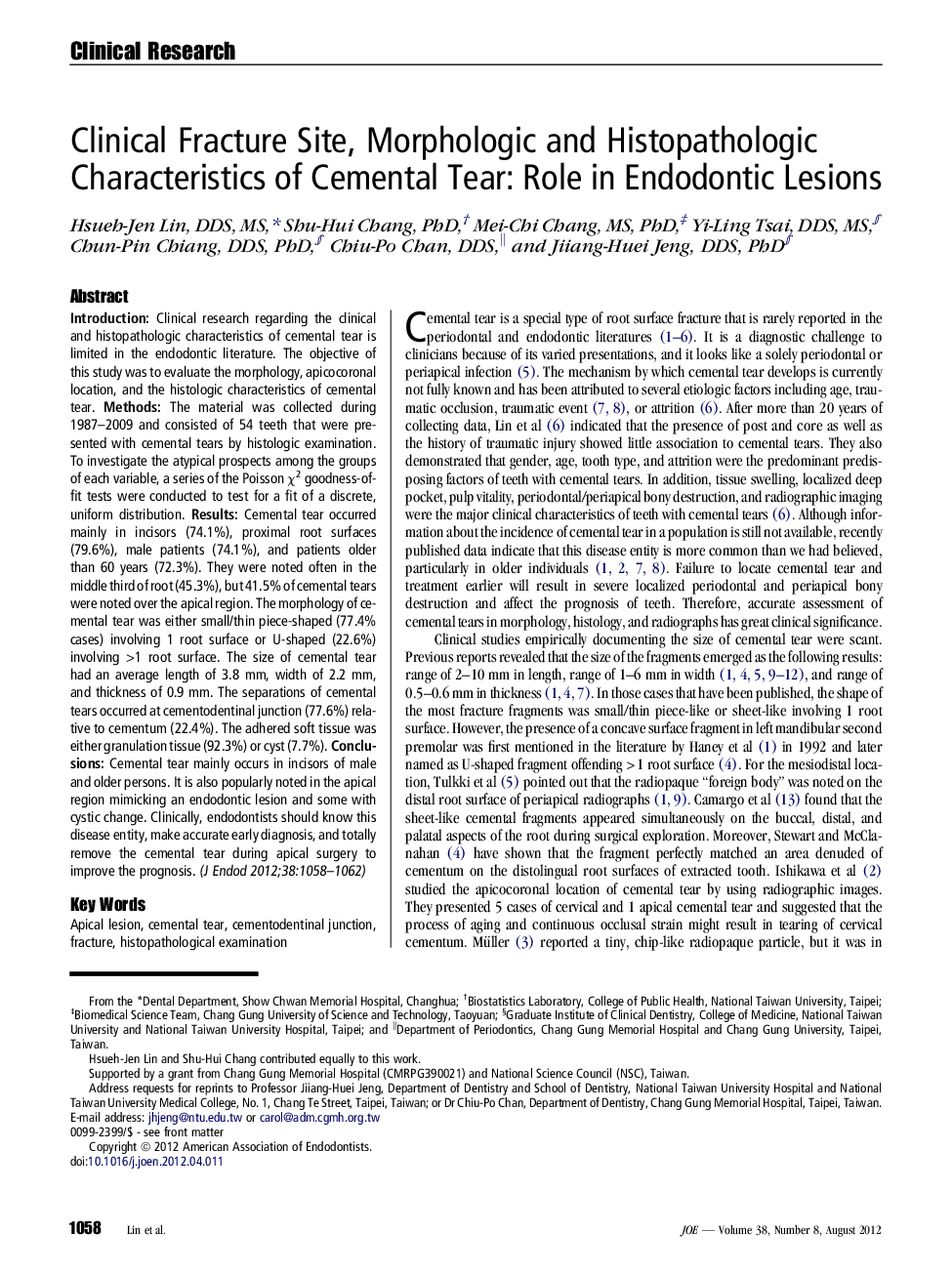| Article ID | Journal | Published Year | Pages | File Type |
|---|---|---|---|---|
| 3150406 | Journal of Endodontics | 2012 | 5 Pages |
IntroductionClinical research regarding the clinical and histopathologic characteristics of cemental tear is limited in the endodontic literature. The objective of this study was to evaluate the morphology, apicocoronal location, and the histologic characteristics of cemental tear.MethodsThe material was collected during 1987–2009 and consisted of 54 teeth that were presented with cemental tears by histologic examination. To investigate the atypical prospects among the groups of each variable, a series of the Poisson χ2 goodness-of-fit tests were conducted to test for a fit of a discrete, uniform distribution.ResultsCemental tear occurred mainly in incisors (74.1%), proximal root surfaces (79.6%), male patients (74.1%), and patients older than 60 years (72.3%). They were noted often in the middle third of root (45.3%), but 41.5% of cemental tears were noted over the apical region. The morphology of cemental tear was either small/thin piece-shaped (77.4% cases) involving 1 root surface or U-shaped (22.6%) involving >1 root surface. The size of cemental tear had an average length of 3.8 mm, width of 2.2 mm, and thickness of 0.9 mm. The separations of cemental tears occurred at cementodentinal junction (77.6%) relative to cementum (22.4%). The adhered soft tissue was either granulation tissue (92.3%) or cyst (7.7%).ConclusionsCemental tear mainly occurs in incisors of male and older persons. It is also popularly noted in the apical region mimicking an endodontic lesion and some with cystic change. Clinically, endodontists should know this disease entity, make accurate early diagnosis, and totally remove the cemental tear during apical surgery to improve the prognosis.
